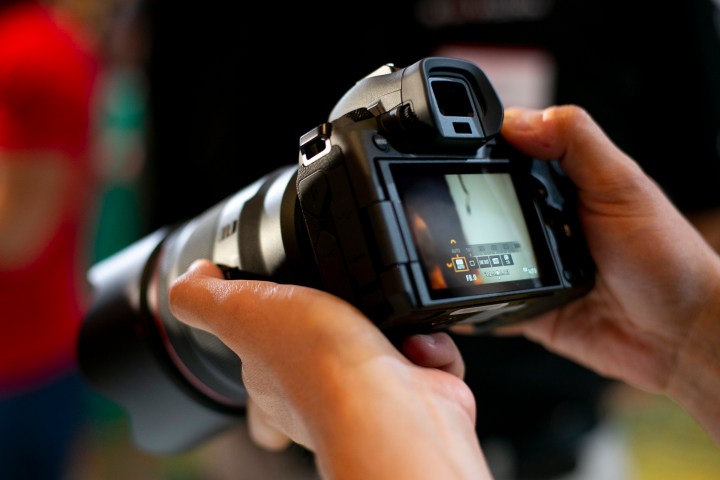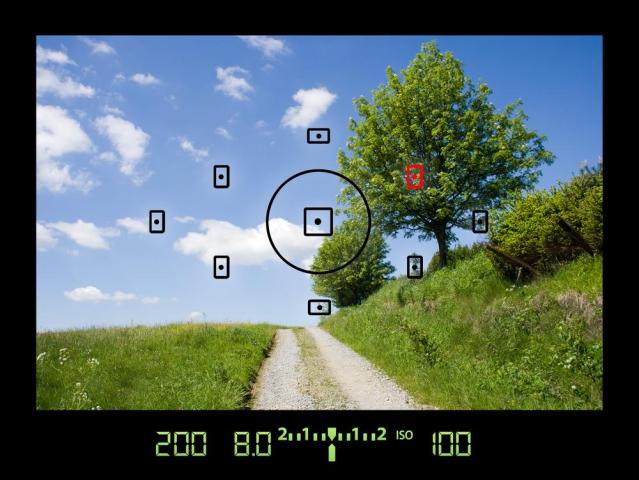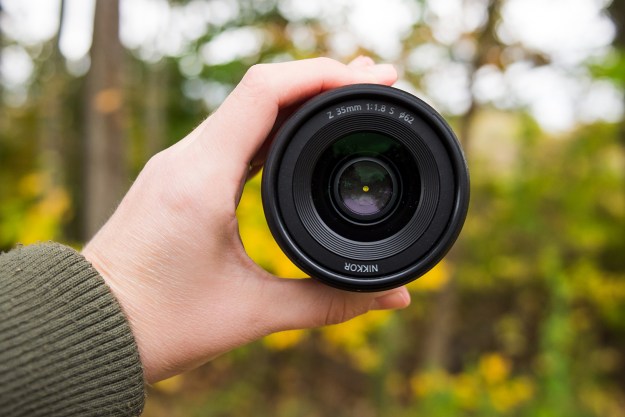
Despite modern advancements in photography making it easy for every man, woman, and child to get their Annie Leibovitz on, taking breathtaking photos isn’t always quite as simple as just hitting the shutter button. To make the most of your camera, you should understand a wide range of prerequisites, skills, and advanced functions in order to get terrific-looking photographs. One of those skills can mean the difference between capturing a blurred mess and a sharp stunner: autofocus.
Perhaps one of the most important steps to taking beautiful photography lies with understanding how your camera’s focusing system works. All cameras — whether you own a high-end or an entry-level interchangeable lens model — feature a collection of autofocus (AF) sensors and processors that work tirelessly to focus on a subject or object.
To help you get a better understanding of autofocus systems, we’ve put together this simple rundown on how these features work and when to use each autofocus mode. We can’t guarantee reading our guide will allow you to achieve National Geographic acclaim, but it’s a great reference for any amateur or novice photographer, and will definitely help you capture better photos.
How does autofocus work?
Autofocus is either performed by a dedicated AF sensor (in DSLRs) or on the imaging sensor itself (in mirrorless cameras, or DSLRs set to live view mode). Traditionally, DSLRs offered much faster autofocus performance because of this, but in recent years, mirrorless cameras have caught up thanks to on-chip phase detection.

There are basically two types of autofocus that cameras can use: phase detection or contrast detection. Phase detection is generally considered the superior method for all focusing scenarios, but particularly for continuous autofocus and subject tracking. This is due to its ability to calculate not just when a subject is in focus, but whether an out-of-focus subject is back-focused or front-focused, letting the camera know which direction to move the lens in order to bring it in focus.
Contrast detection, on the other hand, works by looking for contrast alone, as maximum contrast occurs when an image is in focus. While this technique can be just as accurate as phase detection for nonmoving subjects, it will generally be slower and less accurate for moving subjects as it can only tell whether or not something is focused or defocused, but not which direction it needs to move the lens. Contrast detection systems are notorious for focus “hunting,” in which the lens racks from one end of the focus range to the other trying to find the area of most contrast.
A camera’s autofocus accuracy greatly depends on the location, type, and the outright number of autofocus points.
Most modern mirrorless cameras employ a hybrid approach of contrast and phase detection. Dual Pixel AF is a phase detection technology employed by Canon on both its mirrorless cameras and DSLRs. Nikon DSLRs still use contrast detection when in live view mode, but the new mirrorless Z series features on-chip phase detection. Panasonic Micro Four Thirds mirrorless cameras use an advanced contrast detection technology called Depth from Defocus, which analyzes the blur pattern of compatible lenses to determine whether an object is front or back-focused.
What’s an autofocus assist beam?
An autofocus assist beam is an incredibly useful feature found on many cameras. It’s essentially a small flashlight which uses either visible or infrared light to help a camera’s autofocus sensors when there isn’t enough ambient light for them to work properly. Many external flashes also have advanced AF assist beams built into them, which actually project a grid onto the scene for the AF points to lock on to.
Understanding autofocus points
While every camera features an autofocus sensor and processor, the range of specific autofocus points varies from model to model. A camera’s autofocus accuracy — and pure capability — greatly depends on the location, type, and the outright number of autofocus points. For example, top-tier cameras tend to have autofocus points in the three digit range (the Canon EOS R has more than 5,000), whereas entry-level models may feature fewer than a dozen.

High-end DSLRs typically feature cross-type sensors that cover most of the desired image, allowing for the highest accuracy. Surrounding these cross-type sensors are a series of lower accuracy, vertical line sensors that provide one-dimensional detection. Though these are inferior to the cross-type sensors, they complement the framed image to help achieve the best possible focus. Lower-end DSLRs also feature cross-type sensors, though the flexibility drastically differs compared to higher-end models.
Most cameras also offer a type of continuous focus mode which tracks moving objects, while also adjusting its focus distances
Most entry-level models tend to feature just one cross-type sensor for f/2.8 apertures, and lose the functionality of these sensors with smaller apertures. One way to assist with the focus process on these cameras is to initially use the maximum aperture afforded, even if you plan on snapping on a smaller aperture. Though not a definitive solution, this does tend to help the smaller aperture achieve the desired focus even though it lacks several autofocus points.
Moreover, using the central autofocus point — with either a high-end or entry-level SLR — on objects outside of the center of your desired image helps achieve a better focus lock for the entire photograph. Simply point the center of your camera at an off-center object, allow the autofocus sensors to find a desirable focus level, then reframe your camera back to the original position.
Autofocus modes and when to use them
A camera’s autofocus modes help determine exactly how the camera focuses — photographers adjust them based on the subjects they are shooting, like if you are photographing something that’s moving or something that’s stationary. Autofocus modes (and the related autofocus area modes) can be adjusted inside the menu, while many high-end cameras have a shortcut using physical controls. If you can’t find the autofocus mode options on your particular camera, take a look at the camera’s manual to locate them, since each model may be different.

Unless you prefer shooting moving objects most of the time, chances are you’ll likely use one-shot focusing while taking pictures. One shot or single-servo AF, as the name suggests, focuses only one time when the shutter button is half-pressed. Because the focus only works once, if the subject moves between that half press and when the image is actually taken, even slightly, the image will be out of focus. The one-shot or single shot focus, often abbreviated as AF-S, works best with stationary subjects, like food and landscape photography.
Most cameras also offer a type of continuous focus mode which continuously tracks moving objects, while simultaneously adjusting its focus distances accordingly. Where the single shot focus measures the focus only once, continuous autofocus works the autofocus system constantly between the time the shutter button is pressed halfway and when the shot is actually taken.
If you shoot burst mode, continuous autofocus will continue to track the subject between those frames. (Some cameras require slower burst speeds to use continuous autofocus, however). Depending on which brand of camera you own, this function may go by several different names. For instance, Nikon calls this feature its continuous focus, while Canon refers to it as AI Servo focusing. It’s also often referred to shorthand as AF-C.
Autofocus modes choose how the camera focuses, autofocus area modes choose where the camera focuses.
Continuous focus functions by anticipating the movement of objects in the frame, based on the movement speed and location of the object at prior distances. To account for its own lag in shutter speed, the camera uses its prediction of the object’s location to focus on a spot in the frame where it intends the object to be.
Using continuous focus greatly improves your chances of shooting clear pictures of moving objects. It’s best for any subject that’s moving, besides the obvious like sports photography, active kids and pets, and even people walking are best shot with this setting. Don’t just leave the camera on AF-C forever, though — the focus system anticipates movement and if your subject isn’t moving, you could end up with an out-of-focus shot. Some cameras also an AF-A mode, which is where the camera decides whether to use AF-C or AF-S mode.
Using autofocus area modes to pick the focal point
Autofocus modes choose how the camera focuses, autofocus area modes choose where the camera focuses. If your camera selects a different subject than the one you had in mind, you’re not using the right autofocus mode. Autofocus modes and autofocus area modes are distinct — you choose two each time you adjust the autofocus settings, not one or the other. Some autofocus area modes do require a specific autofocus mode — tracking autofocus options, for example, are only available once you are in continuous autofocus.
Auto Area

On by default, this autofocus area mode allows the camera to choose what should be in focus. You can see what the camera has selected with the points that pop up on the screen or viewfinder, but in this mode, you can’t change them. This mode is helpful because it’s simple to use and faster than changing the focal point, but it doesn’t really let you choose where to focus. Generally, the camera will simply focus on the closest object in the frame.
Single point autofocus

Unlike auto area, single point autofocus lets the photographer choose where to focus without reverting to manual focus. In this mode, you move one autofocus point around on the screen or in the viewfinder and place that point directly over what you want to focus on. Depending on the camera model, you can move that focus point using the same arrow buttons you use to navigate the menu or using a joystick, if your camera has one. This autofocus mode is the most precise and gives the photographer the most control over where the camera focuses. It’s used in portraits to focus on the eyes, landscapes to get most of the scene in focus and many other genres. The downside is that you have to actually move that point — and it can be difficult to move the point fast enough with quick moving subjects.
Dynamic or tracking autofocus
Dynamic is similar to single point autofocus, only once you focus on that single point, the camera will follow that object, even if it moves around the frame. Tracking is helpful for shooting fast action, since it’s hard to move the autofocus point faster than the subject moves.
Group area autofocus
A hybrid between auto area and single point, this autofocus area mode uses a group of autofocus points instead of a single point. Unlike auto area, you can direct the camera to focus on a specific part of the frame. This mode still focuses on the closest object, but only within the designated AF point group. It’s not as specific as single point autofocus, but it can be much easier for certain subjects, particularly small, fast-moving ones where keeping a single AF point over them would be difficult.
Face and eye detection

Just like the name implies, this is a fully automatic mode that looks for faces (and on some cameras, even individual eyes) to focus on. This is a particularly useful mode for vlogging when you need to shoot video of yourself and can’t monitor the focus. Since this requires image analysis, face detection only works on mirrorless cameras or in live view. Not all cameras have this feature, but it is becoming more common.
Wrapping up
If you took a photo that’s out-of-focus, chances are, adjusting either the autofocus mode or autofocus area mode would have captured a sharp shot. If the camera is focusing on the right spot of the image (you can tell by where the focal point pops up in the viewfinder as you shoot) but is still out of focus, you are probably using continuous autofocus on a still subject, or using single autofocus on a moving subject. Remember, single is for still subjects, continuous is for action.
If the camera isn’t even focusing on the right part of the image, then the autofocus area mode is to blame. The default auto area mode is easy to use, but doesn’t give you much control. Using single point autofocus instead offers more control, while tracking or dynamic autofocus offers that control but can keep up with moving subjects.
Editors' Recommendations
- Photography 101: Exposure, aperture, shutter speed, and ISO
- Optical vs. digital zoom: What you need to know
- Canon vs. Nikon: Everything you need to know about the camera heavyweights
- What is ISO?
- What is live view? How to make the most of this feature on your DSLR




